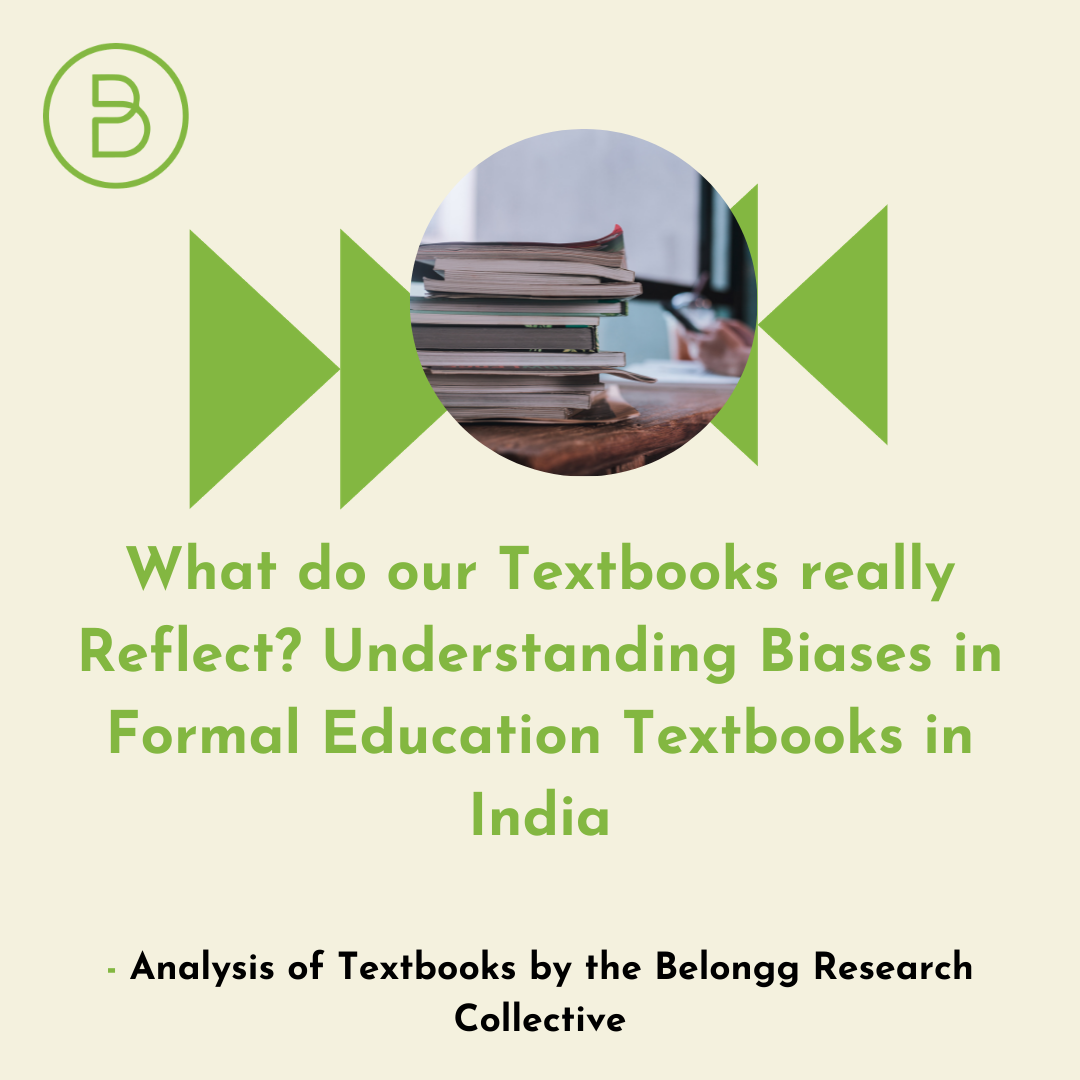In a deeply inequitable society, the importance of education as a tool to address systemic biases has been greatly emphasised. Many activists and practitioners, especially those from marginalised identities have advocated for equal access to quality education to empower communities to invest in their own language, politics and development.
However, education as a social transformation tool may be jeopardized because of continuous reproduction and preservation of social inequities based on caste, gender, disability, religion, immigration, etc. by educational institutions. Research has consistently shown that educational institutions act as sites of oppression against traditionally marginalised groups. As a result, 75% of more than six million children currently out of school in India are either Dalits (32.4%), Muslims (25.7%) or Adivasis (16.6%). (Oxfam Report, 2015)
Educational exclusion is maintained through a variety of factors, and bias in curriculums can validate existing stereotypes, prejudice and biases. According to the Global Monitoring Education Report 2020, ‘pervasive sexist attitudes’ in school textbooks are invisible obstacles in educating girls, undermining their life expectancy, careers, and gender equality. This is also true for other marginalised identities, especially those discriminated against on the basis of caste and religion.
The Belongg Research Collective undertook a comprehensive study to analyse textbooks of 1st to 5th grade to review existing biases, stereotypes and omissions based on caste, gender and disability. The findings below are in no way exhaustive, and rely on careful academic research to validate the same:
Gender
- Textual materials related to all disciplines do not address the contributions and achievement of men and women in an adequate manner.
- All textbooks use examples and express language in strictly binary terms. The idea of family is overwhelmingly indicative of hetero-patriarchal relationships and consistently omits to highlight the identities of Trans and Non-binary folks.
- Textbooks promote values related to masculinity and femininity or negate
- Non-men are underrepresented in textbooks. While men are shown in a variety of professions, women are mostly relegated to domestic spaces or in professions that institutionalise care.
Examples:
(b) Promotion of gender roles
Picture Reference: EVS, III Grade, Gujarat Board
Caste
- The language used to talk about caste realities, including untouchability are shown to be discussed in the past tense.
- The normalisation of dominant caste culture as the pan-India culture.
- Discussions around caste realities are strictly centred around people from marginalised castes. There is no mention of how people from dominant castes are responsible for perpetuating and validating the legitimacy of the caste system. This evokes a lack of accountability for dominant castes.
- Problematic representation of protests led by marginalised groups.
Picture Reference: Class X Civics Book, NCERT
Disability
- Persons with Disabilities are largely invisibilized in school textbooks. Out of 137 lessons in Hindi textbooks, only six lessons contained a reference to individuals with disabilities. Classes II, III and VIII did not have any lessons with reference to persons with disabilities
- The classroom activities promoted for engagement do not take into account the differential needs of people with hearing and visual impairments.
- Some stories in English textbooks surrounding persons with disabilities as protagonists are either portrayed as vulnerable or as evil and palpable.
Religion and Faith
- English textbooks between 1st to 5th grade rarely suggest non-Hindu names. There is not a single mention of non-Hindu names between 1st to 3rd grade.
- The appearance of all characters reflects strictly Hindu culture. For example – women wearing sarees, bangles and bindi–typically associated with that of a traditional Hindu woman.
- Major difference recorded between how Muslim and Hindu rulers are projected. While Hindu rulers are projected as benevolent and kind, most Muslim rulers are projected as violent and harmful.
- The narrative that has been adopted to talk about caste, religion etc. omits the historical injustice and harm done.
Consider the following examples:
This brief study is merely the tip of the iceberg in reflecting how biases are deeply seeded in our conceptualization of narratives and events, which are then propagated at an early age through something as systematic as formal education. While there is an urgent need to reform textbooks to be truly inclusive of the diverse population that they represent, we must simultaneously acknowledge that this is the first step in a long road towards reform.
